
Many of the plants on this list are hardy in northern climates as well, but southern gardeners have more options when it comes to winter color. As noted, the same plant may be used quite differently from one region to the next. Get to know your local hardiness zone and typical winter conditions to help you select the best cool season annuals for your winter garden.
Pansy
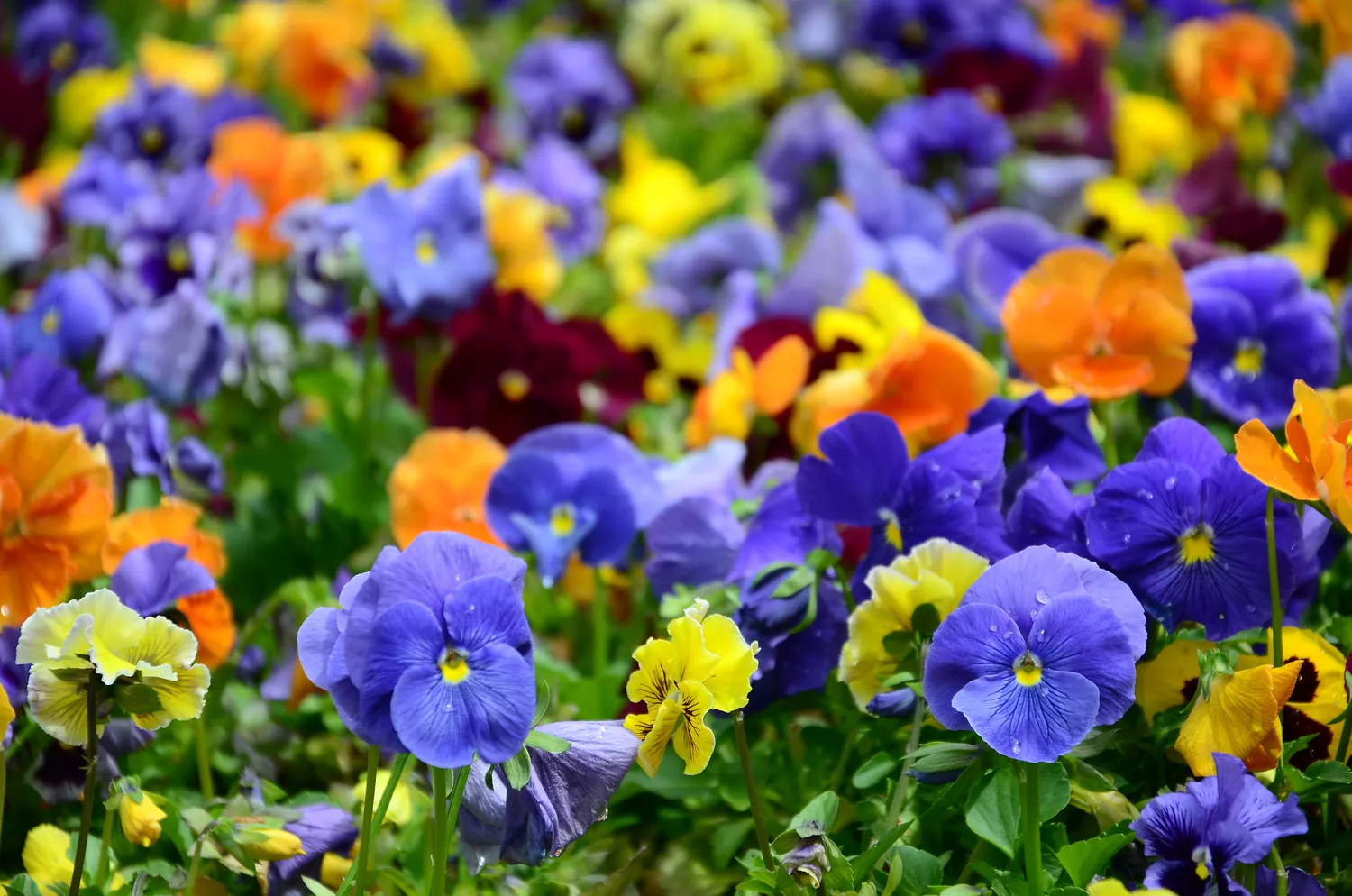
- Botanical Name: Viola x wittrockiana
- Sun Exposure: Full Sun to Part Shade
- Soil Type: Moist, Well-draining, Rich
- Soil pH: Acidic to Neutral (5.5-7.0)
Pansies are quintessential winter flowers, blooming in a range of colors with many bi-color varieties available. Plant them in fall after the heat of summer wanes and enjoy flowers for up to six months. Though a true perennial, pansies are grown as an annual because they wither in the summer heat. Mass them along walkways and outside windows where their color will brighten the winter landscape.
Johnny-Jump-Up
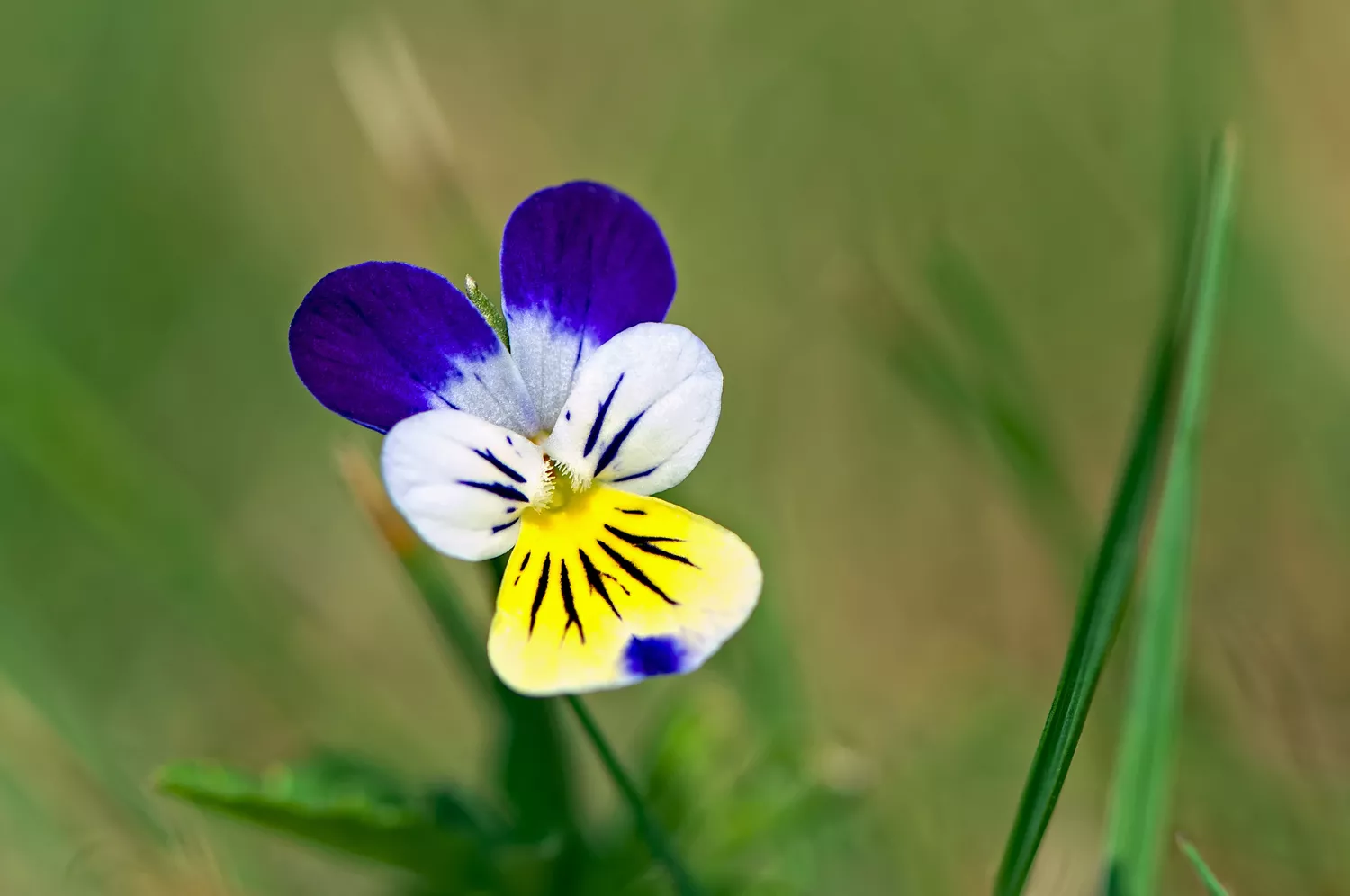
- Botanical Name: Viola tricolor
- Sun Exposure: Full Sun to Part Shade
- Soil Type: Moist, Well-draining, Average
- Soil pH: Acidic to Neutral (5.5-7.0)
Johnny-jump-ups are another type of viola, related to pansies, that bloom despite winter weather. In fact, they are often seen blooming through a thin layer of snow. Their cheery tricolor blooms include a mix of purple, yellow, and white hues. Like pansies, they are short-lived perennials more commonly grown as annuals. Plants work well in winter containers as well as ground plantings.
Ornamental Kale and Cabbage

- Botanical Name: Brassica oleracea
- Sun Exposure: Full Sun
- Soil Type: Medium to Moist, Well-draining, Rich
- Soil pH: Neutral (6.0-8.0)
The colorful foliage of ornamental cabbage and kale looks like exotic blooms. Thick undulating to frilly leaves come in striking combinations of purple, pink, red, blue-green, and cream. The bold colors don’t emerge until temperatures drop and remain all winter long. Ornamental cabbage and kale plants combine beautifully with pansies and violas in winter containers.
Dusty Miller

- Botanical Name: Jacobaea maritima
- Sun Exposure: Full Sun
- Soil Type: Moist, Well-draining, Rich
- Soil pH: Acidic to Neutral (5.5-7.0)
Dusty miller is another plant grown for its foliage, which is deeply lobed and covered in silver hairs that give leaves a silvery sheen. Depending on your climate, dusty miller may be planted as a summer or winter annual, though plants can perennialize in some locations. In USDA Hardiness Zones 10 and 11, dusty miller can be planted October through March for winter and early spring color.
Snapdragon

- Botanical Name: Antirrhinum majus
- Sun Exposure: Full Sun to Part Shade
- Soil Type: Medium to Moist, Well-draining, Rich
- Soil pH: Slightly Acidic to Neutral (6.2 and 7.0)
A great diversity of snapdragons is available with candy-colored blooms in hues of yellow, orange, red, and pink and plants ranging in height from six inches to three feet tall. The more compact varieties are commonly used for winter color in USDA hardiness zones 9 (8b) to 11. Plants provide cut flowers through the colder months. Dusty miller and ornamental kale make great companions.
Polyanthus Primrose
- Botanical Name: Primula x polyantha
- Sun Exposure: Part Shade
- Soil Type: Moist, Well-draining, Rich
- Soil pH: Acidic (5.5-6.5)
Polyanthus primroses are a type of primrose that blooms from winter through early spring, producing gorgeous blooms in rich shades of blue, purple, burgundy, and gold. They are remarkably frost tolerant, though a hard freeze can send plants into dormancy. Primroses are perennial in nature but require a cool climate and are commonly grown as annuals in the south. In frost-free areas, set out plants in fall and in colder areas, plant in late winter.
Annual Ryegrass
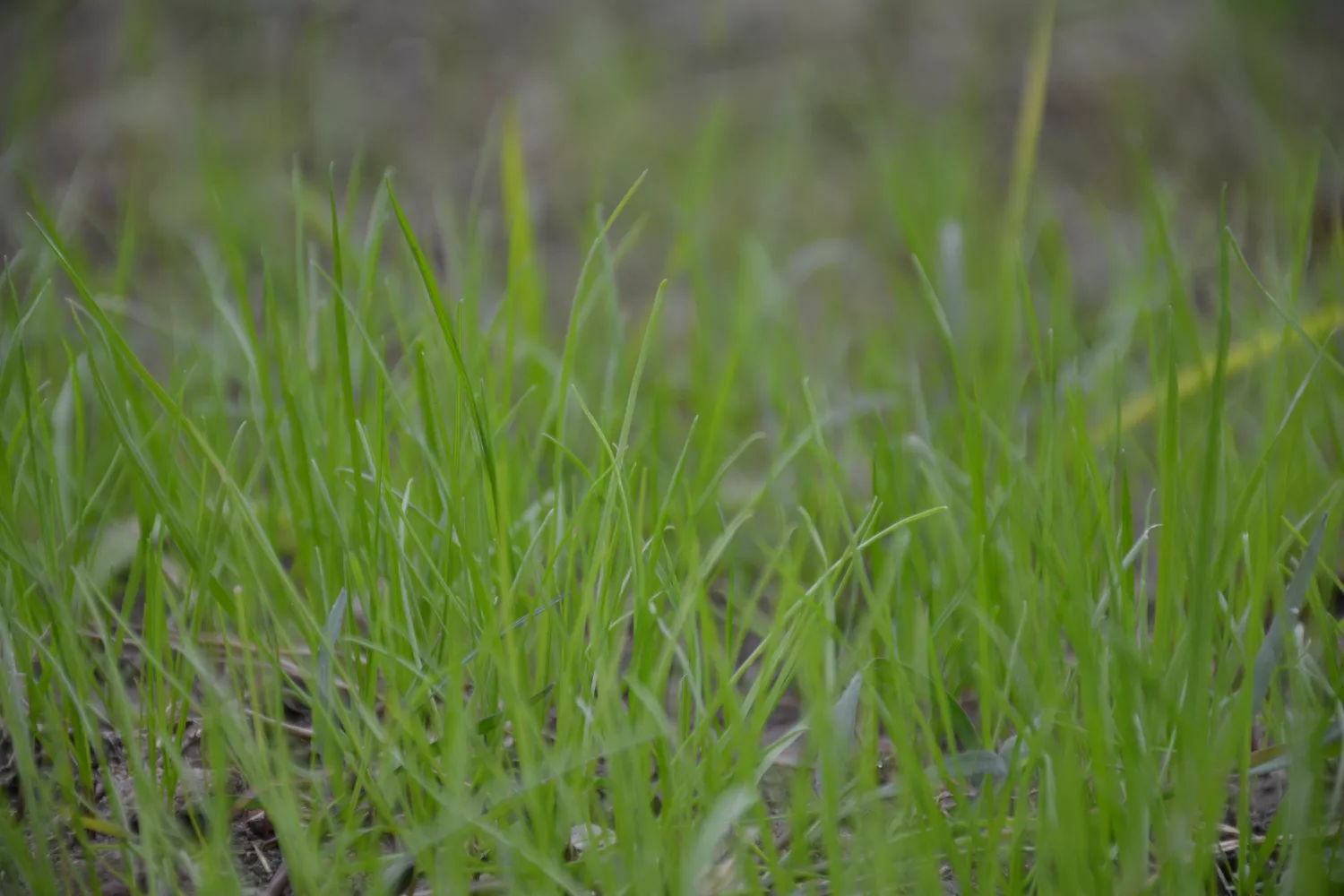
- Botanical Name: Lolium multiflorum
- Sun Exposure: Full Sun to Part Shade
- Soil Type: Moist, Well-draining, Rich
- Soil pH: Acidic to Neutral (5.0 to 7.8)
Ryegrass is commonly used to overseed Bermudagrass lawns in southern landscapes to keep the turf green during the winter months. Bermudagrass
is a warm-season perennial that goes dormant during cold weather. In contrast, annual ryegrass is a cool-season annual that dies out in late spring when Bermudagrass is coming out of dormancy. Overseeding with rye is an easy and inexpensive way to provide winter color in the landscape.
Calendula
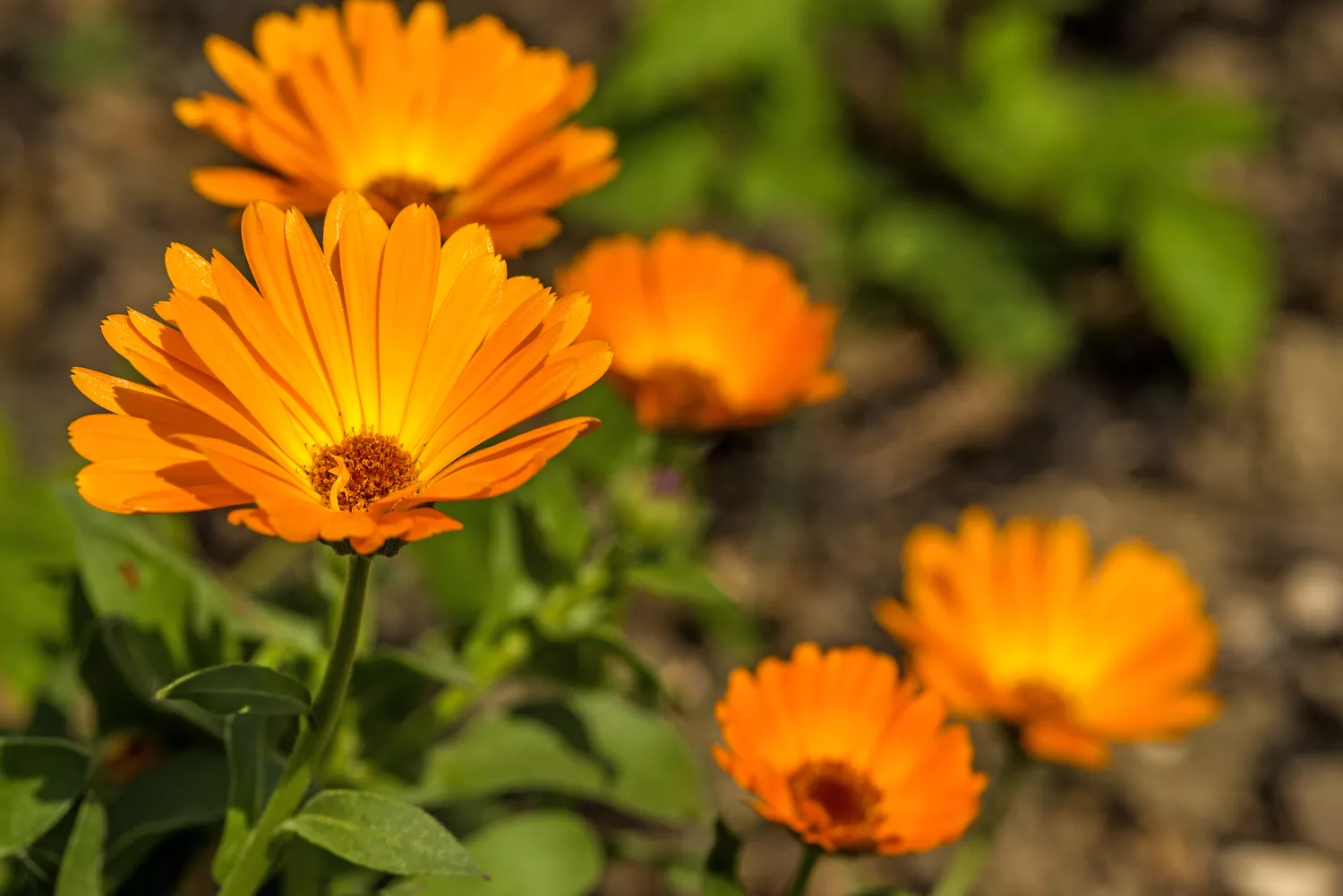
- Botanical Name: Calendula officinalis
- Sun Exposure: Full Sun
- Soil Type: Medium Moisture, Well-draining, Rich
- Soil pH: Slightly Acidic to Neutral (6.0-7.0)
Often called pot marigold, calenda thrives under cool temperatures and can be grown as a winter annual in many areas of the south. Though plants are cold hardy, calendula does not tolerate hard freezes. In warmer areas (Zones 9-11), seeds can be sown in late summer or early fall for vibrant blooms during the colder months of the year. In cooler areas, calendula is grown in the shoulder seasons, however a simple frost blanket on cold nights can extend a fall planting well into the winter months. Plants will die back during the heat of summer.
Baby Blue Eyes

- Botanical Name: Nemophila menziesii
- Sun Exposure: Full Sun to Partial Shade
- Soil Type: Medium to Moist, Well-draining, Rich
- Soil pH: Slightly Acidic to Slightly Alkaline (6.0-8.0)
Though native to cool mountain regions in the northwest, this annual wildflower can be planted as a winter annual in southern gardens. In areas with mild winters (USDA Zones 8-10), sow seeds in late summer and fall for vibrant blooms through spring. Plants do not tolerate the heat and humidity of the south and will decline as the weather warms, though they may leave some seed behind to foster the next season of blooms.
Florist’s Cineraria
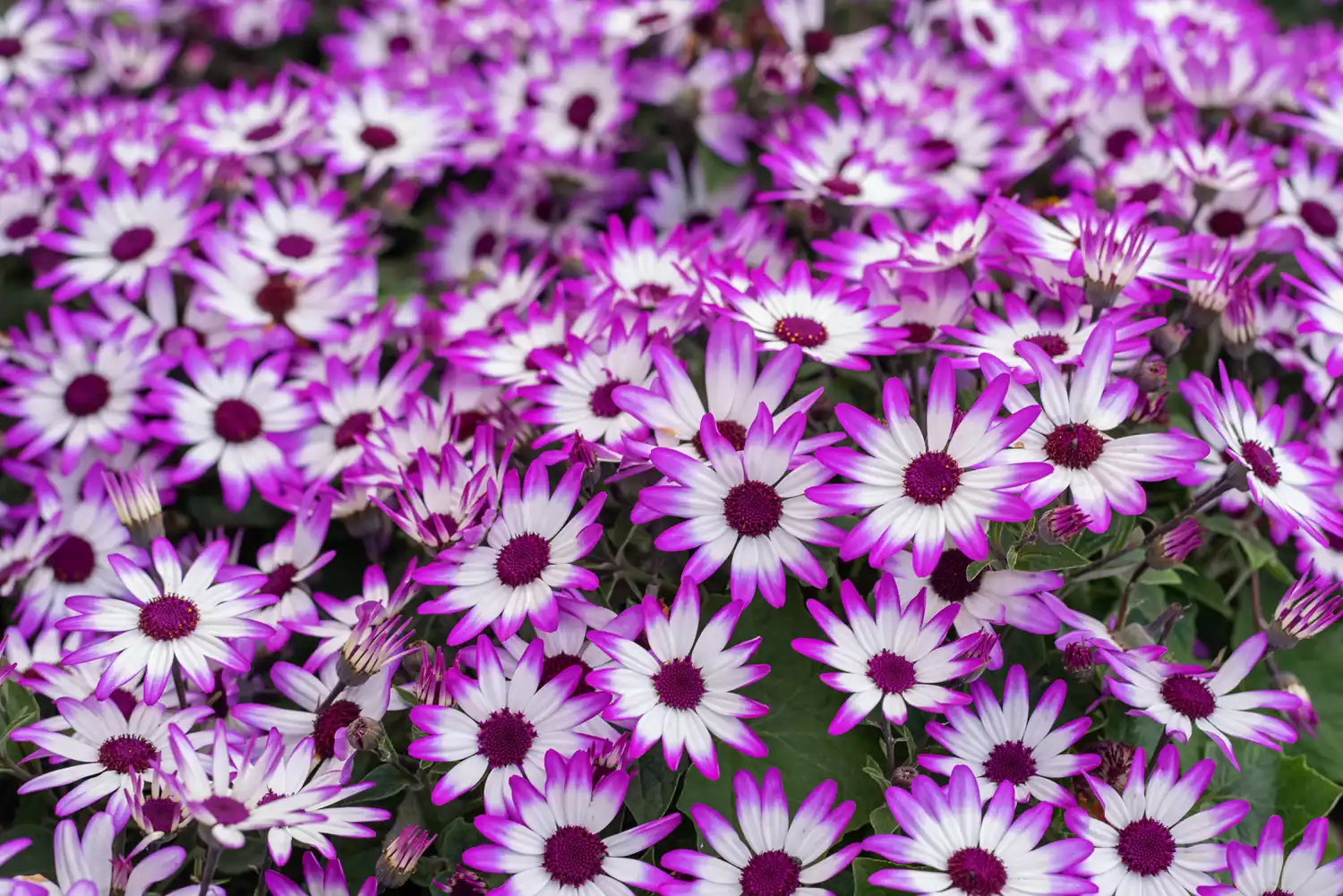
- Botanical Name: Pericallis x hybrida
- Sun Exposure: Part Shade
- Soil Type: Moist, Well-draining, Rich
- Soil pH: Slightly Acidic (5.5-6.2)
Florist’s cineraria, so named because they are popular houseplants, produces an abundance of daisy-like blooms with brightly colored blue, purple, pink, or red petals. Blooms often have a white starburst ring surrounding a dark central eye. When grown indoors, florist’s cineraria bloom during the winter. Gardeners in mild climates (Zones 9-11) can plant outdoors for early spring blooms.
Cape Marigold
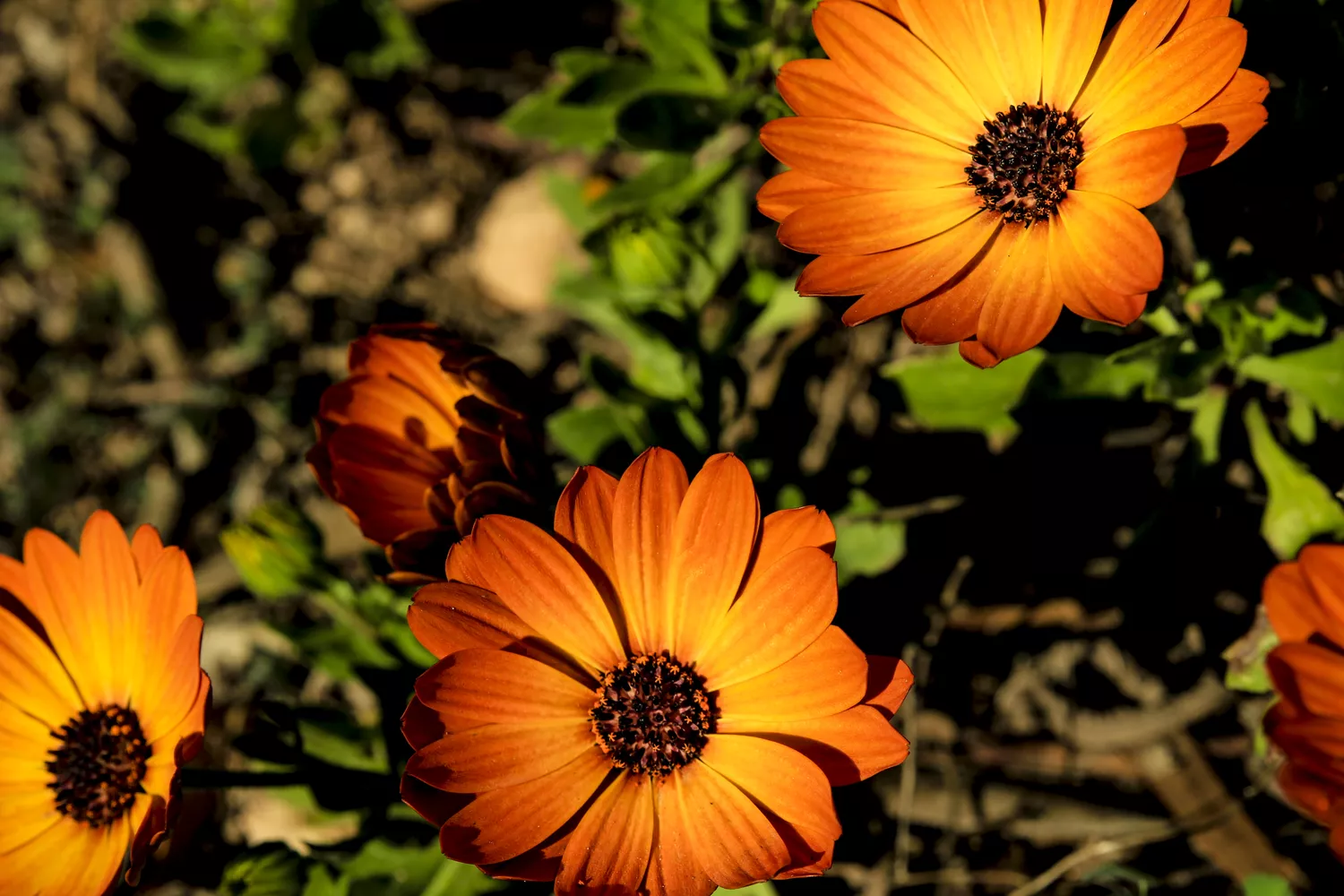
- Botanical Name: Dimorphotheca sinuata
- Sun Exposure: Full Sun
- Soil Type: Dry to Medium, Well-draining, Rich
- Soil pH: Slightly Acidic to Slightly Alkaline (6.0-8.0)
The daisy-like blooms of cape marigold boast bright orange, yellow, purple, pink, and white ray petals surrounding a pollen-rich eye. The sun-facing flowers close at night and on cloudy days. In mild climates, sow seeds in late summer to fall. Foliage remains evergreen through winter, with flowers starting late winter and erupting through spring. Plants flower best when temperatures range between 45 to 50˚ F.
Pinks
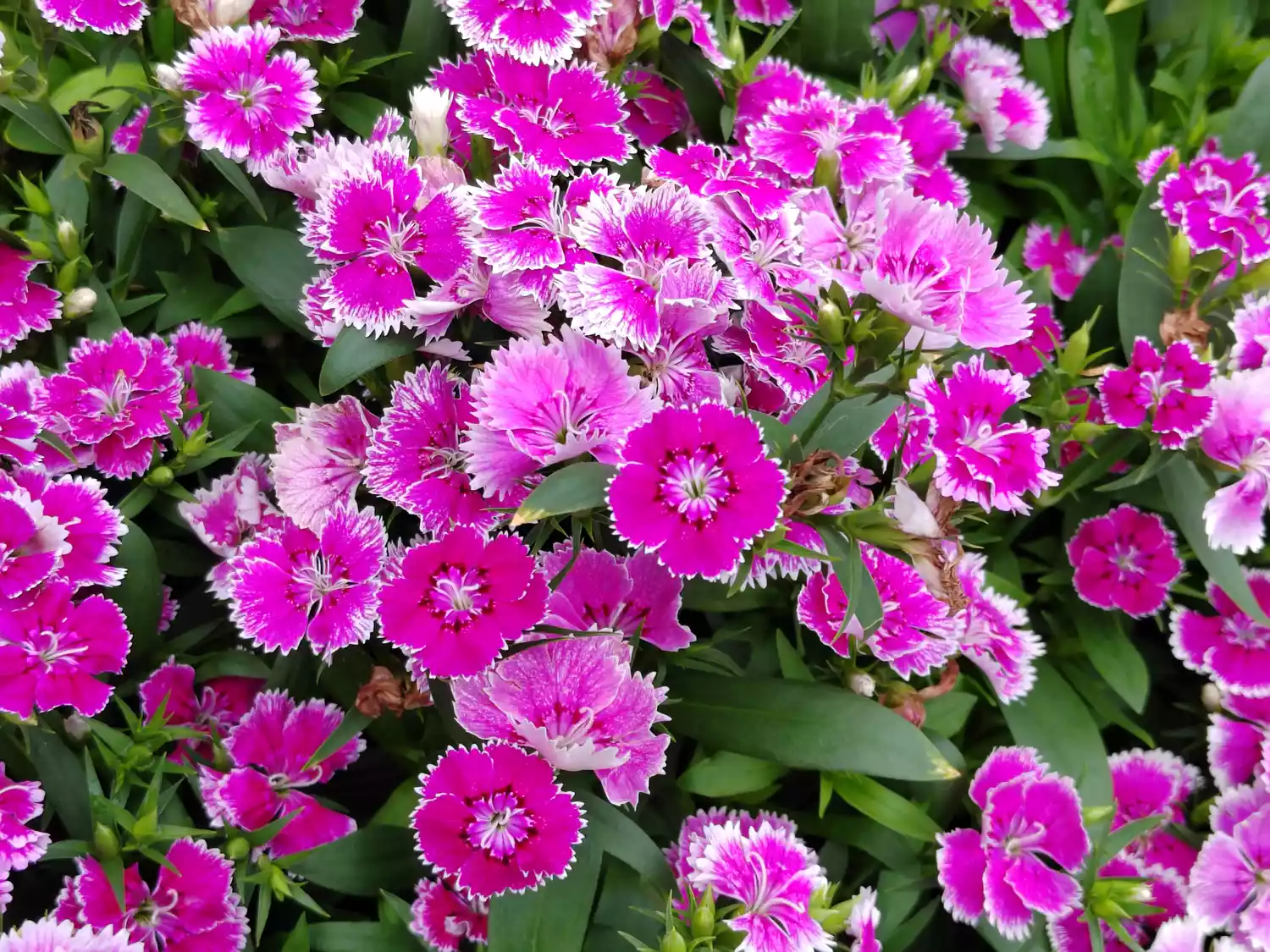
- Botanical Name: Dianthus chinensis x barbatus
- Sun Exposure: Full Sun to Part Shade
- Soil Type: Medium to Moist, Well-draining, Rich
- Soil pH: Neutral to Slightly Alkaline (7.0-8.0)
Pinks are hybrid dianthus varieties grown as annuals in southern states as they do not perform well in hot and humid summers. Commonly planted in fall and spring, plants bloom in vivid shades of pink, burgundy, white, and lavender, with many gorgeous bi-color varieties available. In frost-free areas, fall-planted pinks will bloom through winter. Plants need protection from frost in colder regions. The blue-green foliage combines well with dusty miller.





